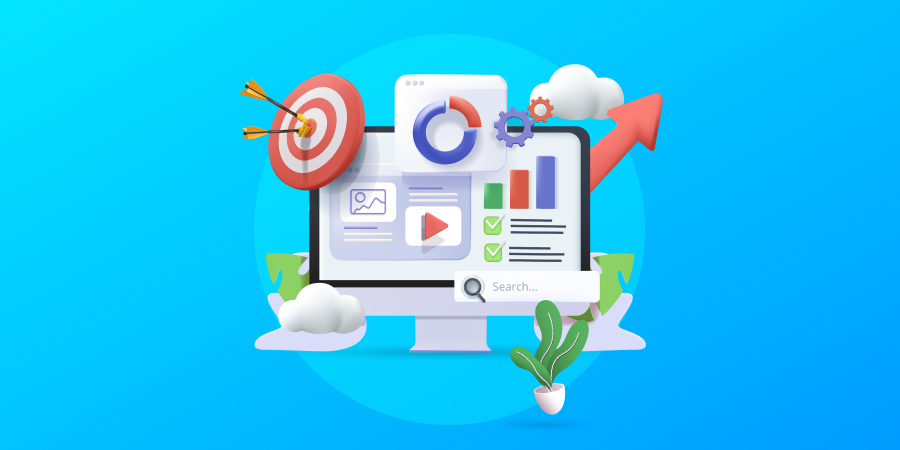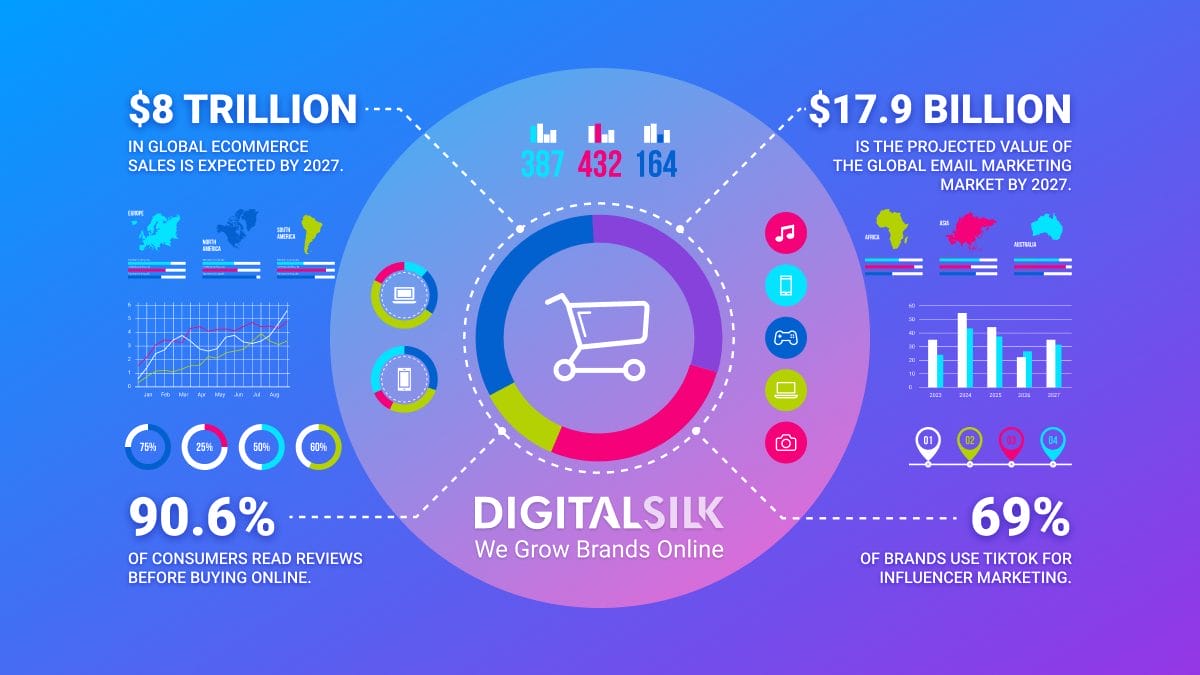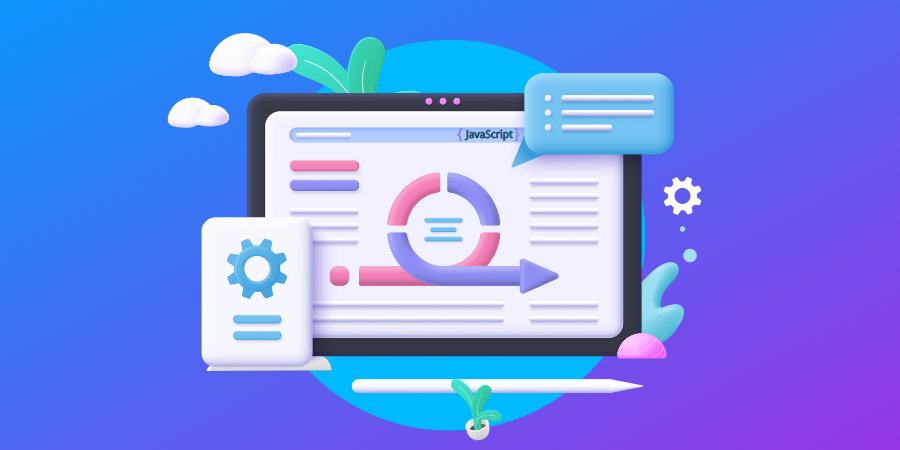If you knew that your website had only seven seconds to impress your prospects, what would you change about it?
Your navigation? Your images? Colors?
The market is moving fast, just like user expectations.
The rapidly changing digital trends indicate the need for flexibility and continuous website improvement as the core part of your digital strategy and web maintenance.
In this post, we will look at:
- The top 5 reasons why you should improve your site regularly
- Common website issues that might be affecting your sales
- Key website improvements a web consultant can help you with
- How to define your business goals and stay on track
Digital Silk builds custom websites. Request a quote
Why Website Improvement Should Be A Constant Part Of Your Web Maintenance Strategy
From following trends to boosting your sales, these are the top five reasons why website improvement should be an integral part of your web maintenance strategy:
1. Stay Relevant
Web design and development is a dynamic field.
New trends and technologies are constantly emerging, which makes it easy for existing brands to lose their appeal in the eyes of the target audience.
To provide an engaging experience, stay competitive and remain relevant to your audience and to search engines, it’s important to audit and evolve your website continuously.
2. Improve User-Experience
Regular analysis of on-site user behavior helps you determine what makes your visitors convert and also uncovers problem areas, which can help evolve user experience accordingly.
To ensure that new UX elements are solving pain points and enhancing the conversion funnel, evaluate the new features via A/B testing and monitoring the key metrics.
3. Boost Your Search Engine Rankings
Search engine optimization is key to generating more organic traffic.
However, since leading engines like Google are constantly updating their algorithms, being on top of your SEO strategy is vital.
To be visible to your target audience as they are searching for the type of products and services your brand offers, work on your technical and on-page SEO regularly.
4. Gain A Competitive Advantage
Ongoing maintenance is the key to good website performance. It grows traffic, builds trust and increases customer retention.
Updated content, page speed optimization and functional navigation are just a few of the factors that keep your prospects engaged with your website longer than with your competitors.
5. Boost Sales
Your website can make or break your business.
According to HubSpot, 90% of visitors leave a website they find unappealing. And as many as 40% of visitors leave a site that takes longer than three seconds to load.
It takes as little as a few seconds to lose a prospect due to a broken link, downtime or a slow-loading page.
This ultimately affects your sales!
Regular website improvement can decrease bounce rates and lost revenues. All it takes is proper monitoring, data tracking and developing a solid plan to make your site more reliable.
Do you want to improve your website with a premium design? Check out our blog on high-end website design key elements and best examples.
Our experts can help. Set Up A Consultation
7 Website Issues That Might Be Affecting Your Site Performance & Conversions
These are some of the most common problems that can affect your sales and website performance.
1. Slow-Loading Pages
As page load time moves from one to ten seconds to load, brands may see a bounce rate increase of up to 123%. (Think with Google)
Loading time is one of the most common reasons for immediate page abandonment. And when it comes to search engine rankings, every second counts. Some research suggests that page speed is one of the ranking factors.
Today’s consumers want to spend less time finding the products and the information they need, which means they have very little to no patience for slow-loading sites.
That’s why they can drastically decrease conversions and have you bleeding leads throughout your conversion funnel.
To avoid this, analyze every page on your website, see what slows them down and make the necessary fixes.
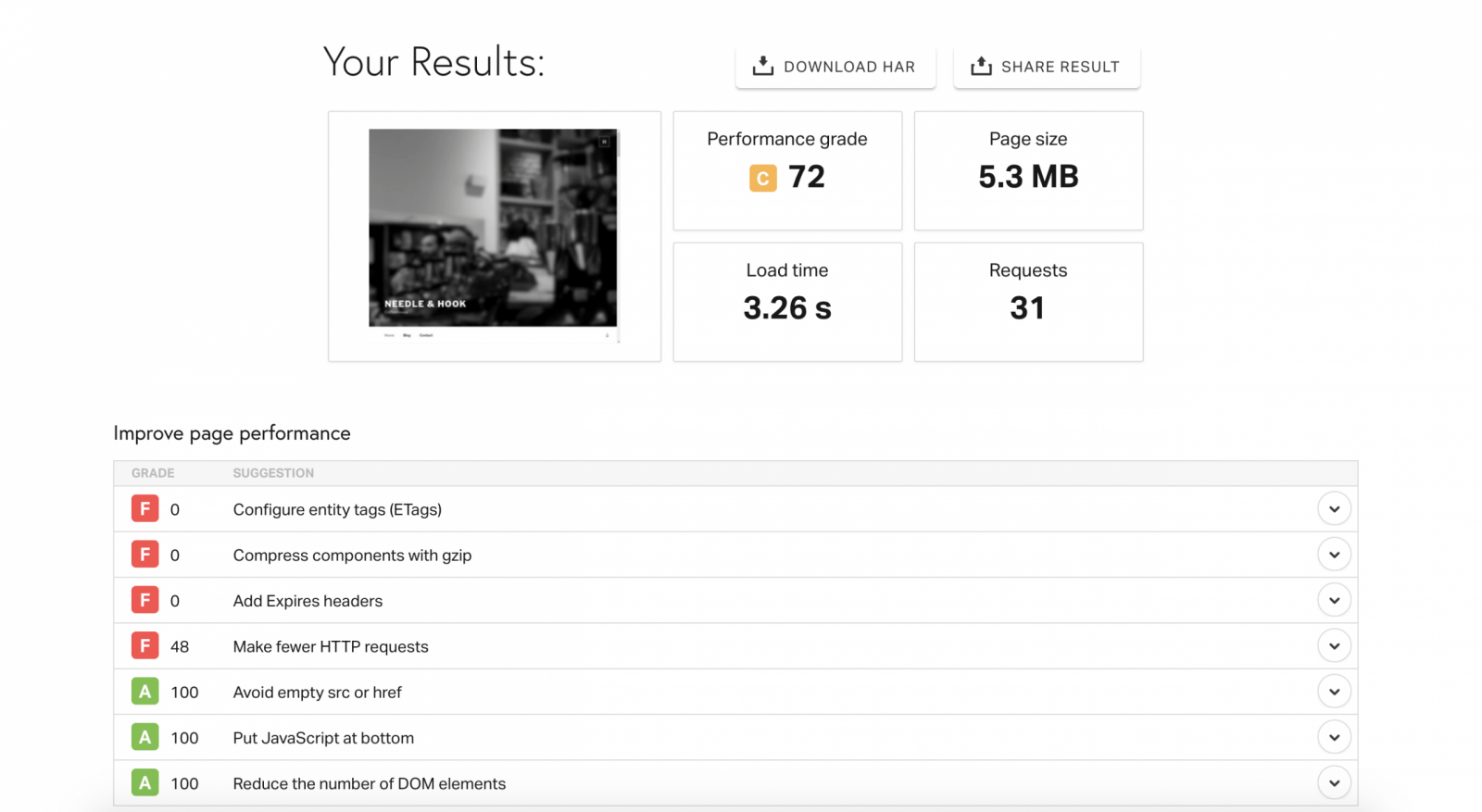
2. Unresponsive Design
Unresponsive design is a common website issue that affects user experience and pushes visitors away.
Here’s why:
According to StatCounter, between April 2019 and April 2020, internet website traffic came via:
- Mobile (53.81%)
- Desktop (43.27%)
- Tablet (2.92%)
In other words: Mobile has surpassed desktop web traffic.
If your website does not work on mobile devices properly, expect to face high bounce rates.
What’s more, mobile responsiveness is one of the signals Google’s algorithm tracks. So, a static website will result in lower rankings.
Speak with our experts. Schedule A Consultation
3. Clutter
Cluttered design forces website visitors to waste time searching for and processing information and trying to engage with your brand.
This can hurt your website performance in two ways:
- It ruins user experience because it inhibits visitors from finding what they are looking for
- In the case of B2B buyers, even if it does manage to get a few points across to the researchers, it is likely to confuse and repel decision-makers with no patience for it
This ultimately results in poor engagement, higher bounce rates and fewer conversions.
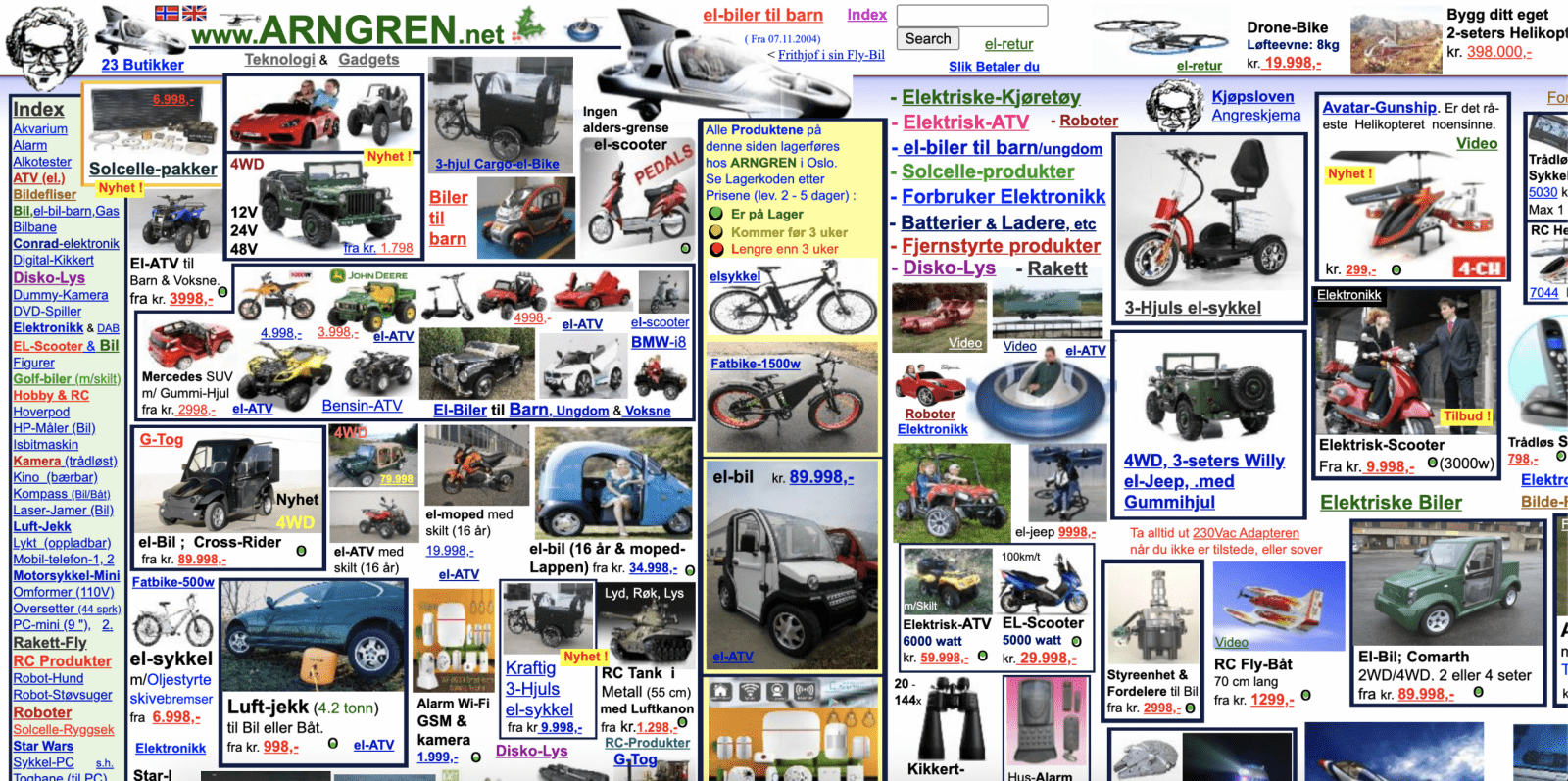
[Source: Arngren]
4. Broken Links
While broken links may not seem like much on the surface, this common website issue can seriously affect:
- SEO: 411 or 404 pages restrict the flow of link equity throughout your website. Once Google’s crawlers track them, it may negatively impact your rankings because the search engine doesn’t want to send users to sites that may provide them with a poor user experience.
- Reputation: Running into a broken link is a frustrating experience. These links prevent users from completing some desired tasks and accessing the information they need. This pushes visitors away and damages your business’ reputation.
- Revenue: Broken pages are roadblocks to the conversion process. Consumers don’t trust companies that provide them with poor experience and they wouldn’t buy from an untrustworthy brand.
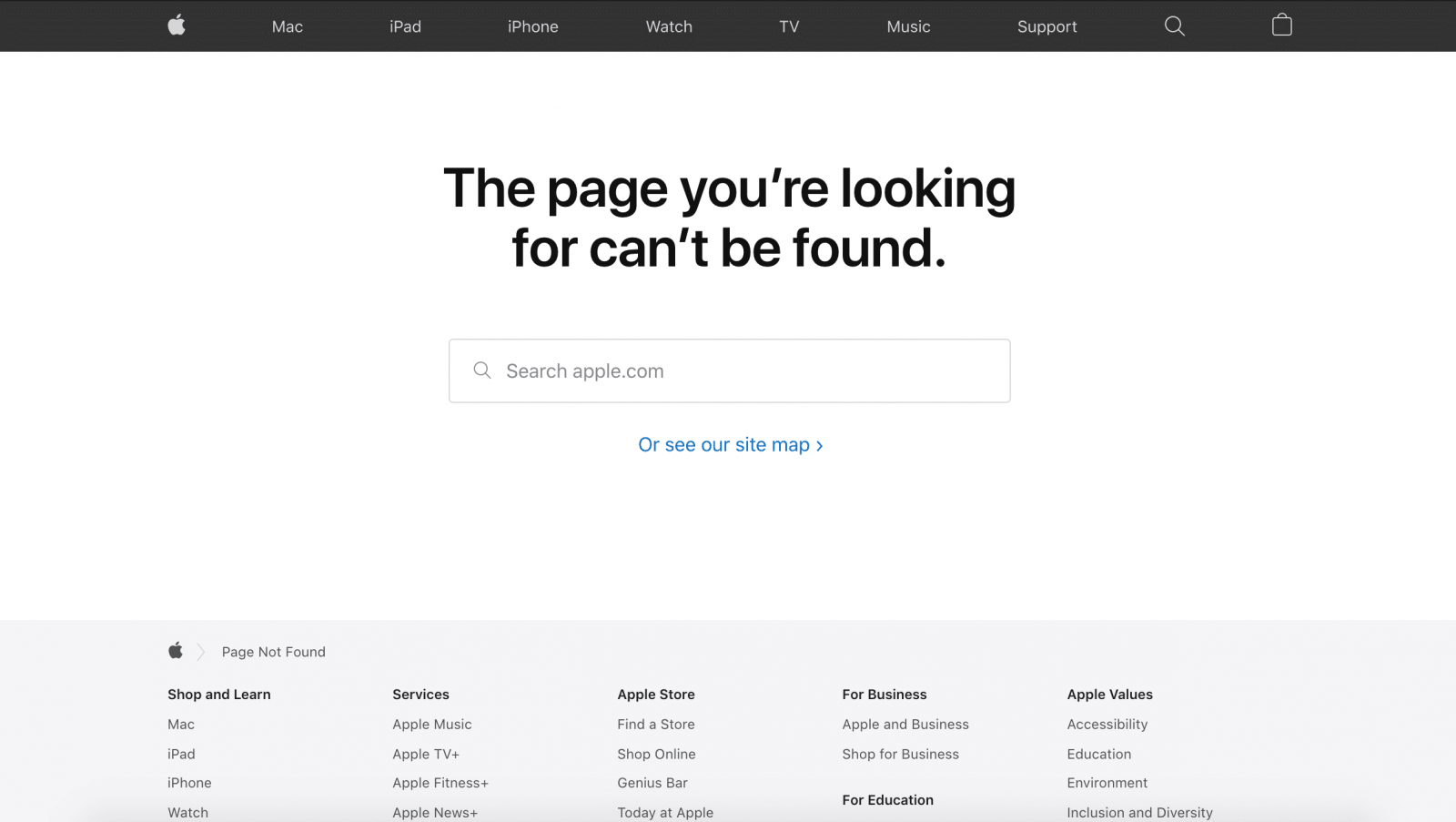
5. Hard-To-Find Contact Details
Due to the growing number of fake websites, which are sites posing as legitimate businesses with the purpose of extracting sensitive personal data, users can be quite suspicious when browsing the internet.
A hard-to-spot phone number, email address and business location can potentially cost you customers and sales for this very reason.
6. Lack Of CTAs
HubSpot found that incorporating anchor CTAs in their content increased their conversion rate by 121%.
CTAs are a key ingredient in effective marketing. They reduce decision fatigue and guide visitors to take specific actions.
You publish content on your site with a purpose. Including compelling CTAs will ensure that each landing page or blog post is meaningful and fits into your overall marketing plan.
A simple CTA like “Click here” or “Buy now” can significantly increase click-through rates and conversions.
7. Complex Navigation Menu
If your navigation menu is complex or unclear, your prospects may bounce and start another search for a website that will live up to their expectations.
Simple navigation can make all the difference in keeping users invested in your website. It saves them time, improves on-site experience and even helps facilitates the decision-making process by making key information easily accessible.
Consult with our experts. Request An Audit
6 Website Improvements A Web Consultant Can Help You With
A web consultant works closely with your in-house team, helps you discover website issues and assists you in fixing them.
Here are five ways a web consultant can help you make the necessary website improvements:
1. Website Audit
A website audit helps you analyze the current state of your site, find out what’s working and what’s not and helps you discover discrepancies in data and compatibility.
It is an inevitable process for website improvement that will provide you with key data on:
- Content quality
- Responsiveness
- Loading times
- Optimization
A web consultant brings to the table the expertise and experience you need to:
- Identify the right data to analyze and track
- Assess the current metrics
- Ask the right questions
- Set realistic goals
- Identify impediments to performance
- Identify untapped opportunity
At Digital Silk, our experts use a comprehensive website audit to determine your website’s strengths and weaknesses, and identify areas for improvement. For example, check out our CEO’s website evaluation of two major streaming networks – Netflix and Hulu.
2. Web Design & User Experience
Web design and user experience go hand in hand. As we’ve seen by now, these are strongly correlated with how users perceive the brand, influencing their decision to trust and engage with it.
From details like the psychology of color and font + browser compatibility, to more complex elements like wireframes and responsiveness, a web consultant will help you optimize your design for user engagement and conversions.
Counting on the help of expert advice, you will be able to enhance:
- Usability
- Aesthetics
- Visibility
- Interaction
3. Web Development
Your website’s backend is as important as your site’s frontend. It contributes to a user-friendly content management system, easy navigation and site compatibility with various devices.
When it comes to backend development, a web consultant can help you with:
- Creating and managing the database
- Choosing the right server technologies
- Integrating cloud computing
- Developing and managing a content management system
- Managing APIs resources
- Organizing backup files
4. Search Engine Optimization & Content Strategy
Organic search generates 53% of total website traffic.
There are three tactics that stand out for an effective organic search strategy:
- On-page SEO: This includes optimizing your content to allow search engines to understand its topic. Key factors to consider are keyword optimization, quality content and interlinking, among others.
- Technical SEO: The strategies around technical SEO are not content-related and their aim is to improve the website’s backend structure and foundation. They relate to mobile-friendliness, site speed, security and more.
- Off-Site SEO: While not a website improvement tactic, per se, off-page SEO strategy contributes to website performance in search. It incorporates tactics that improve a website’s domain authority and strengthens the relationship with other sites and brands. This strategy includes, but is not limited to, gaining quality backlinks, guest blogging and influencer marketing.
5. Data-Driven Marketing
Web consultants can help you improve your marketing strategies by collecting and making sense of deep data on every aspect of target user behavior.
The data they collect is both on and off-site, procured by high-end tools that rely on cookies.
This then feeds back into the website improvement plan, as well as beyond, including remarketing, digital marketing campaign strategies, business opportunities and more.
6. Conversion Funnel
A sales or conversion funnel is the user journey that a website visitor goes through from their first interaction with your business until they convert and become a client or a customer.
Optimizing the conversion funnel is vital for gaining qualified prospects and:
- Increasing sales thanks to a bigger number of prospects going through all the stages of the funnel
- Giving you an edge over your competitors that do not optimize their funnel
- Identifying the right marketing strategy through targeting the right audience in particular stages of their user journey
Website consultants take these steps to optimize your conversion funnel:
- Research your target audience and market to know your ideal customer profile
- Create a content strategy that prospects will find educational and helpful
- Use the right content and media at every stage of the funnel that supports corresponding stages of users’ journey
- Capture prospects’ email addresses
- Include case studies, review and client testimonials as social proof
- Include enticing calls-to-action
- Simplify checkout forms

How To Define Your Website Goals & Stay On Track
A website primarily exists to accomplish your business goals and serve as a tool for company growth.
Whether it is brand awareness, lead generation or client retention, to successfully compete you need to set clear objectives.
To set your website goals effectively, make sure you stick to the S.M.A.R.T rule:
- Specific: Your goals should be clear, well defined and unambiguous
- Measurable: The goals you set should be able to be tested and measured
- Attainable: Your goals should not be impossible to achieve
- Realistic: Your goals should be reasonable and relevant
- Timely: You should have a clearly defined timeline and determine a specific start and end date
While it may be easy to set website goals, sometimes it can be quite difficult to accomplish them.
However, here are a few tips that will help you stay on track with your objectives and realize your goals successfully:
- Don’t focus on too many goals at a time: A goal takes time, effort and a strong strategy to accomplish. And trying to complete several objectives at once, you may end up failing to achieve any of them.
- Do your research: Before you start focusing on your website goals, you should make it clear who you are targeting, where your audience is located and even spy on your competition to see what strategies work for them.
- Set a strategy: To execute your goals successfully, you should craft a plan beforehand. Make sure you gather the facts to see where your business is standing now. Analyze the info and find a better opportunity to achieve your website goals.
- Set deadlines: Every goal should have a realistic deadline. They will help you move closer to what you want to accomplish and force you to organize tasks based on their priorities.
- Track your progress: Tracking the progress of your website goals will help you find out whether your strategies work or not. It is beneficial in discovering visitor trends and opportunities that you can leverage to improve your approach in the long term.
Website Improvement Takeaways
Your website is your salesperson and one of the most powerful marketing channels in your arsenal.
To optimize its efficiency and effectiveness, website improvement should be at the heart of your maintenance and digital strategy.
It will help you:
- Stay relevant
- Improve user experience
- Improve your search engine rankings
- Gain a competitive advantage
- Increase your sales and revenue
To improve your website, identify the key bottlenecks to user engagement and conversions.
The most common website issues include:
- Slow-loading pages
- Unresponsive design
- Cluttered design
- Broken links
- No contact details
- Lack of CTAs
- Complex navigation
A web consultant can help you identify what pushes your visitors away and help you with:
- Website Audit
- Web design and user experience
- Web development
- Search engine optimization
- Data-driven marketing
With the help of an expert, you can make the necessary website improvements and boost its performance.
Your website primarily exists to accomplish your business goals. To define and stay on track with them:
- Stick to the S.M.A.R.T rule
- Focus on one goal at a time
- Identify your audience and competition
- Set a strategy base on the data you collect
- Set deadlines
- Track your progress
Follow this link to discover how to create a website redesign RFP that puts all of your web improvement goals under one roof.
"*" indicates required fields




